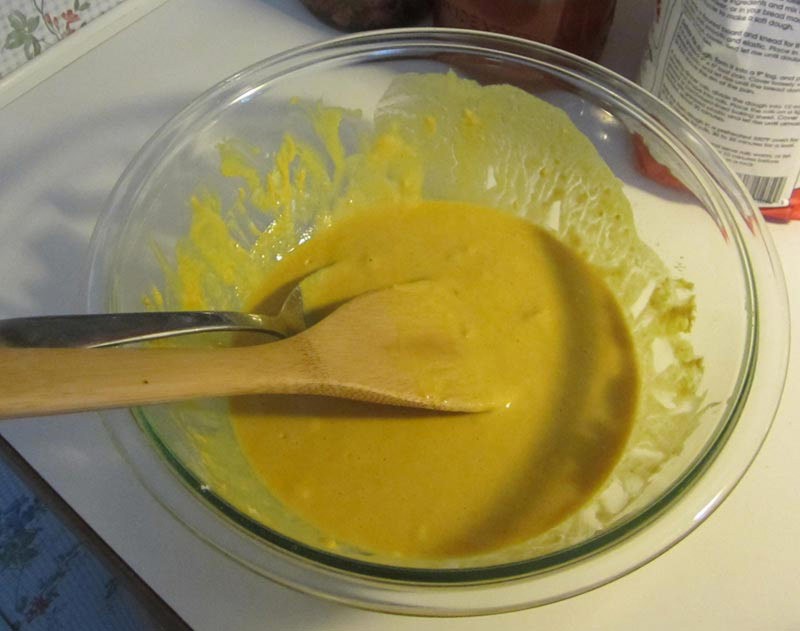It can be difficult for beginning foragers to make the leap beyond the most familiar wild foods. For those who want to expand their repertoires beyond ramps, fiddleheads, and blueberries, I cannot think of a better food than the edible pollen of the common cattail (Typha latifolia). It is unmistakable, fun to gather, easy to process, and tastes delicious.
The greatest challenge in harvesting this unusual food is catching it during its brief season. During the late spring and early summer, the cattail’s flowers start to form, looking like two green hot dogs impaled on a stick, one on top of the other. The one on the bottom is the female flower that will produce the familiar fuzzy puffs of seeds in the autumn. The one on top is the male flower, which generates great quantities of wind-blown pollen. The problem is that this pollen disperses quickly once it forms. (The season for cattail pollen can be as short as a week!) If you have access to a large cattail marsh, start watching it carefully in mid-June. When a gentle tap to the cattail stalk releases a cloud of yellow dust, it is time to gather. Do not delay, especially if there is rain or wind in the forecast. They will wash and blow your harvest away.
To gather the pollen, I prefer to use a clean, dry, milk jug. I bend the pollen-covered spike into the jug and shake. A fine yellow dust will settle into the container along with fibers from the flower itself. Over the course of an hour, I have gathered two to three cups of pollen from the small riverside marshes near my home. Those that live near large lakeside marshes can expect to gather up to a quart per hour in good conditions. I sift the inevitable mass of fibers, insects, and spiders from the pollen by suspending the mixture in a jelly bag or cheesecloth in a half-gallon glass jar. This keeps me from losing the fine pollen dust to the air as I shake it.
The pollen itself is beautiful, and if it didn’t taste so good, I would be tempted to keep it on my kitchen windowsill. Supposedly, it can keep for quite some time. I wouldn’t know. My family usually scarfs down all of our cattail pollen baked goods on the day we gather. We use it to replace about 50 percent of the flour in the goodies we prepare. Try something simple first, like the pancake recipe here. Whatever you choose, I doubt you’ll be disappointed by the golden color, the mild flavor, or the adventure.
Cattail Pollen Pancakes
½ cup all-purpose flour
½ cup sifted cattail pollen
½ teaspoon salt
2 tablespoons sugar
2 teaspoons baking powder
1 egg
2 tablespoons melted butter
1 cup milk
Mix the dry ingredients and add the liquid ingredients into the dry. Mix minimally. Pour ¼-cup dollops of batter onto a pre-heated griddle. Turn pancakes when bubbles burst and edges are dry. Makes about 8 pancakes.



Discussion *